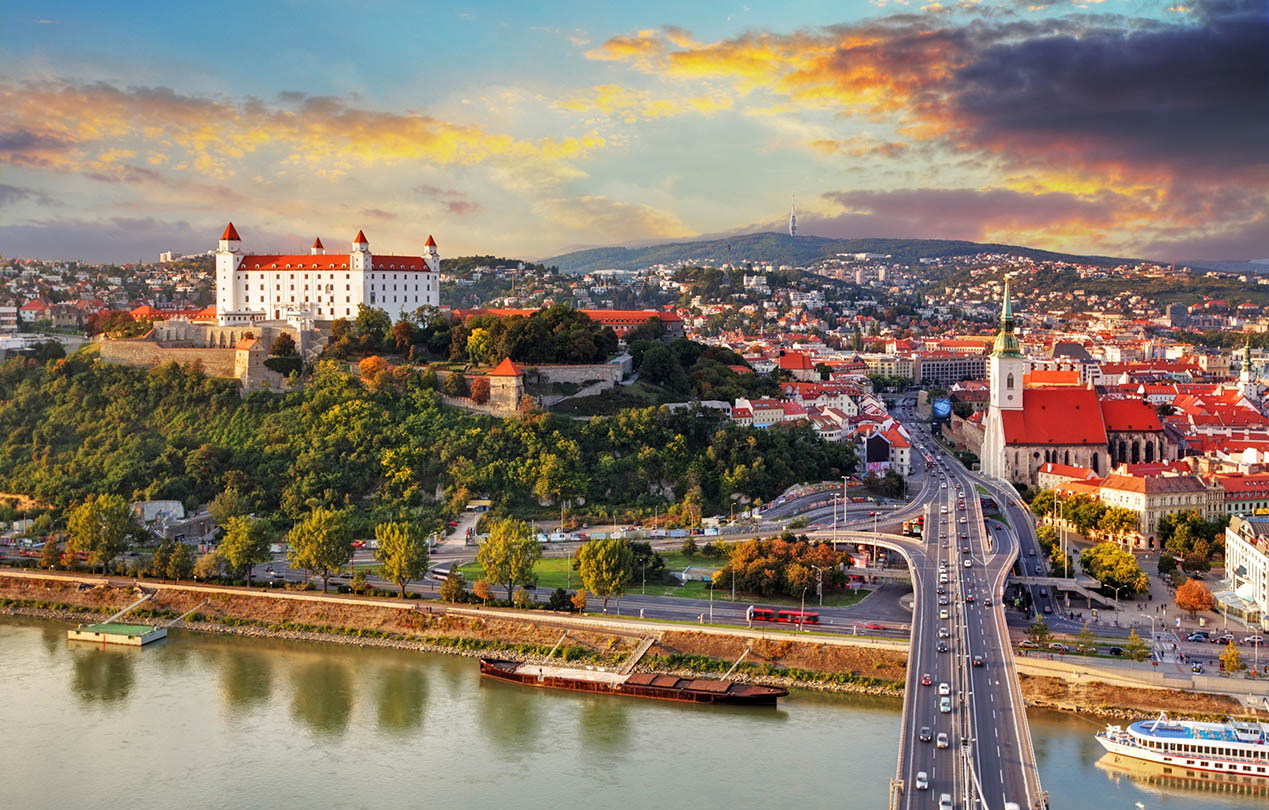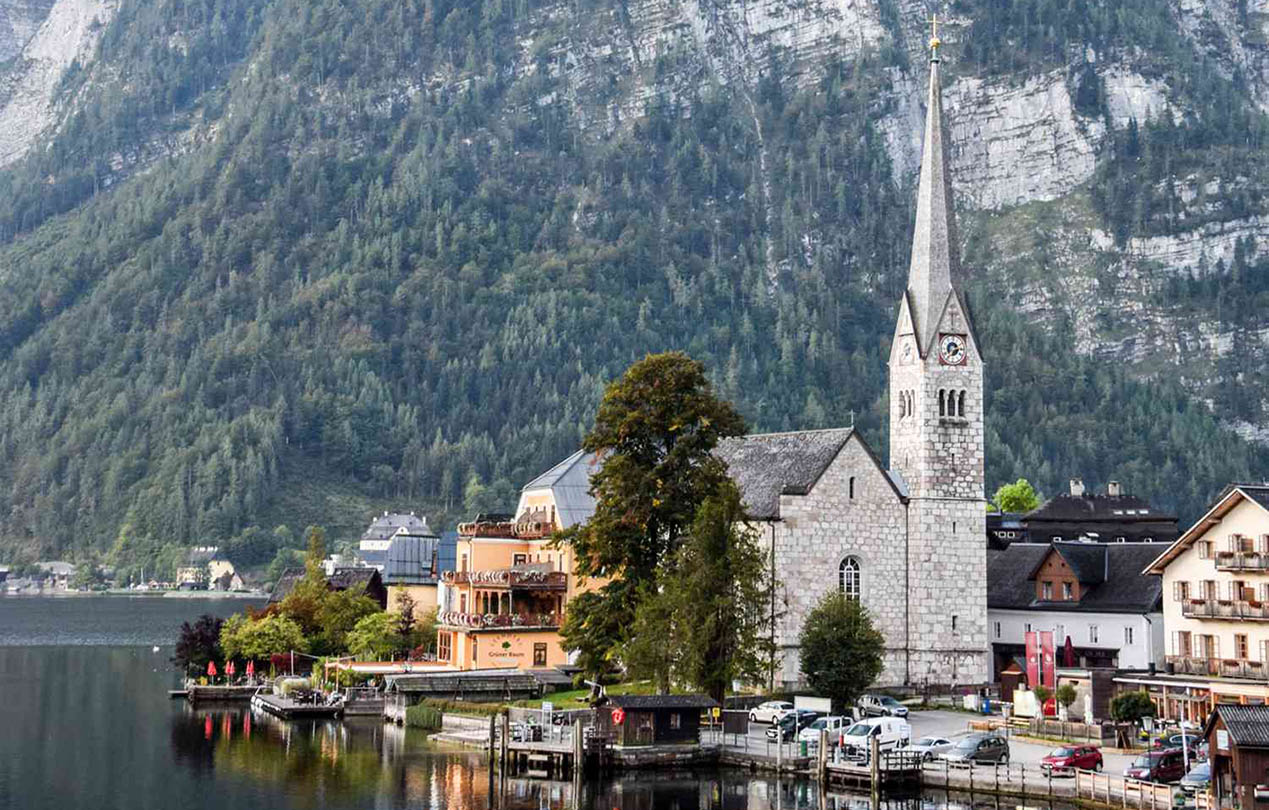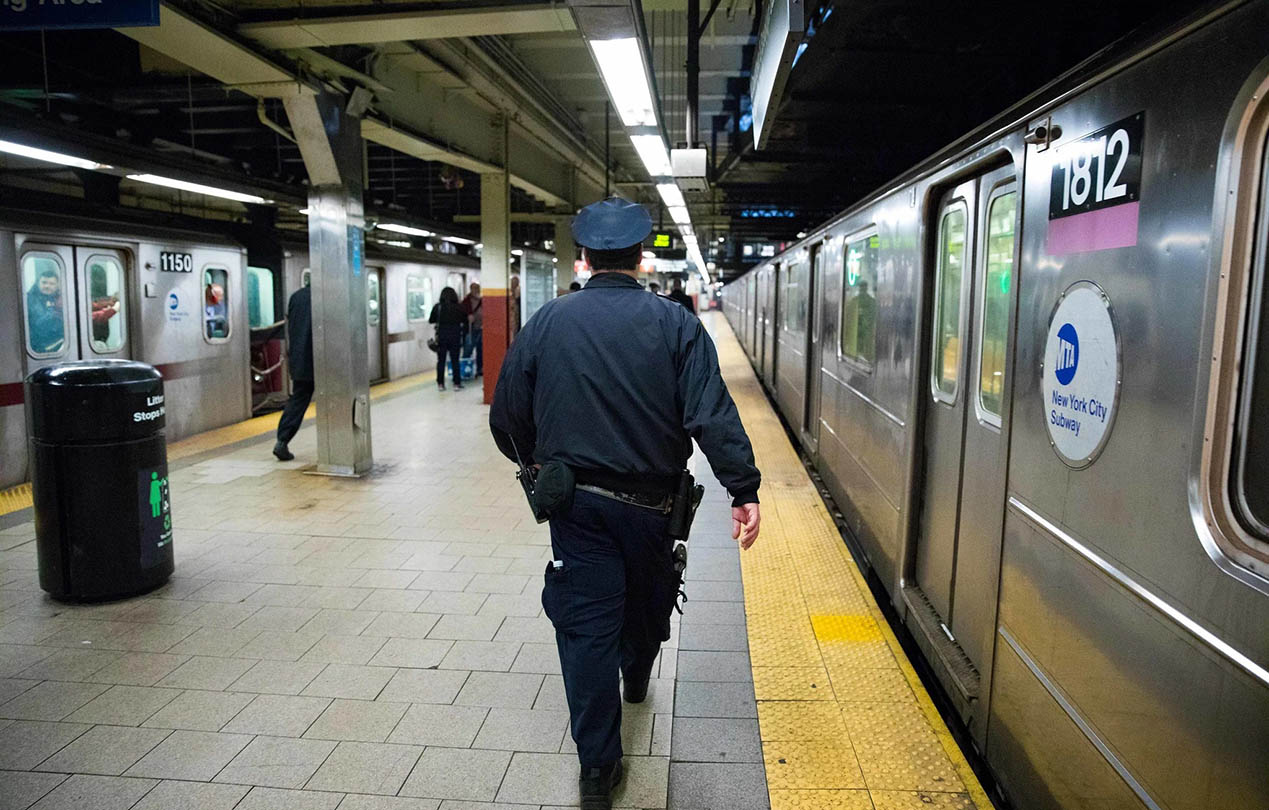Known for its rich history, folklore culture, and landscapes, Slovakia has become an increasingly popular tourist destination in recent years. If you are in search of adventure and discovery, this country promises a complete change of scenery with its exceptional wildlife and flora, unique traditions, and warm population. Let yourself be captivated by its lively cities, architectural relics, and the taste of its local wine.
A Unique Cultural Diversity
If you wish to get closer to nature while still enjoying the heritage of the past, a stay in Slovakia is highly recommended. You will appreciate its unique landscape accompanied by its nine national parks and its cultural heritage influenced by its various neighbors for centuries. Slovak culture is one of the richest in the world. This is especially evident in its diversity since the country declared its independence over 25 years ago. Nicknamed the “Tiger of the Tatras” due to its economic boom in the early 2000s, Slovakia offers a palette of colors and new experiences to live during your stay.
Description of Slovakia
- Area: 49,035 km²
- Population: 5.459 million (2020)
- Capital: Bratislava
- Main Cities: Bratislava, Košice, Prešov, Nitra
- Official Language: Slovak
- Currency: Euro
- National Holiday: January 1st (commemoration of the country’s independence)
Why Travel to Slovakia?
Perfectly Preserved Natural Landscapes
Slovakia is ideal for outdoor activities. Among other things, it has many paradisiacal natural parks for hiking, rafting or kayaking, and cycling. Its landscape is also quite remarkable: mountains, gentle hills, and steep cliffs typical of Eastern Europe are very suitable for walks and excursions. Although the country is less known compared to its neighbors like Austria or Poland, it assures an escape that meets your expectations. The Tiger of the Tatras indeed adapts to all the desires of travelers. From north to south, east to west, it offers a plethora of activities suited to everyone’s personality.
A Unique Architectural Wealth
Many believe that Slovakia has always been part of Yugoslavia and Czechoslovakia due to its name, but it has inherited a lot from Hungarian architecture. It is therefore no surprise that you will encounter cornices, oriels, and beautiful portals in the Hungarian style in many of its cities. However, the facades are painted with bright and sweet colors, reflecting the temperament of the Slovaks. Do not miss a visit to Bratislava for a total immersion in Slovak culture and tradition.
Activities and Places of Interest in Slovakia
Slovakia stands out for its sober and traditional side with a perfect blend of modernity and openness to the world. Here are some ideas for activities and places to discover to combine pleasure and change of scenery.
Slovak Folklore
Slovakia is distinguished by its rich culture. During your trip, you will surely discover folk dances as well as traditional crafts like sculpture, pottery, beekeeping, and especially lace embroidery, one of the country’s specialties. To do this, consider visiting Martin. There you will find the Slovak National Museum, which has the largest open-air ethnographic site in Slovakia. You can discover traditional Slovak construction methods. Moreover, this visit immerses you in the country’s popular identity through thousands of objects, signs of the evolution of Slovak art and craft over hundreds of years.
Hiking for Outdoor Enthusiasts
Slovakia offers many hiking trails for climbing, trekking, or descending, depending on your level. Since the country has several high peaks over 2,500 meters with a breathtaking view, you will enjoy this activity, which is highly popular with tourists. Among the most well-known trails, climbing Jasná Chopok, with its 2,004 meters altitude, is highly recommended. Once at the top, you will almost feel like you are on top of the world. Also, head north of Bratislava. The Little Carpathians mountain range and many beautiful peaks guarantee the same feeling but with less effort.
Cycling along the Danube
Are you a fan of cycling? Slovakia has one of the most important cycle paths in the world. Indeed, the Danube path, 2,900 kilometers long, starts in Germany and crosses Slovakia before ending in Romania. Cyclists pass by the ruins of ancient castles and bridges that connect the two sides of Bratislava. From the capital to the spa town of Piestany, cycling is very popular thanks to the many trails designed for bikes and mountain bikes. These trails are perfectly marked to offer optimal safety to cyclists. For the more adventurous, it is possible to rent a mountain bike and go on an excursion to popular resorts like Donovaly, Jasná Chopok, or Ružomberok.
Exploring Old Buildings in Various Cities
From Bratislava to Nitra, passing through Prešov and Banská Bystrica, old buildings are part of the national cultural heritage to discover during your stay in Slovakia. Bratislava, the Slovak capital, is certainly the largest and most famous city in the country, but also stop in the surrounding cities to get to know Slovak culture and history in depth.
In Košice, for example, you will see the Gothic St. Elisabeth Cathedral, the most famous church in the country, adorned with medieval gargoyles. Now take the road to Prešov where you will find buildings in the historic center that are included in the city’s monument reserve. These buildings are also part of the national cultural heritage.
The Wine Museum, located in a 500-year-old cellar under the Prešov Town Hall, is also a highlight. Nitra has an 11th-century castle and a hiking trail that leads to the top of Mount Zobor, where there are many taverns with local wine.
Medieval Castles Retracing the Country’s History
Did you know that during the medieval period, Slovakia was conquered by invading kingdoms due to its geographical position? Indeed, as the country was located at the heart of the European continent, many kingdoms wanted to seize it. This was the case of the Turks in the 9th century until Napoleon Bonaparte’s invasion in the early 19th century. During conflict periods, Slovak castles are often pillaged or burned if invaders manage to penetrate the castle’s defense system.
Today, many castles are in ruins. By train, you will see ruins of ancient towers perched on a hill through your window. However, several remarkable castles (Spiš, Orava, or Bojnice castles) are restored and currently serve as museums. They illustrate the history of Slovakia.
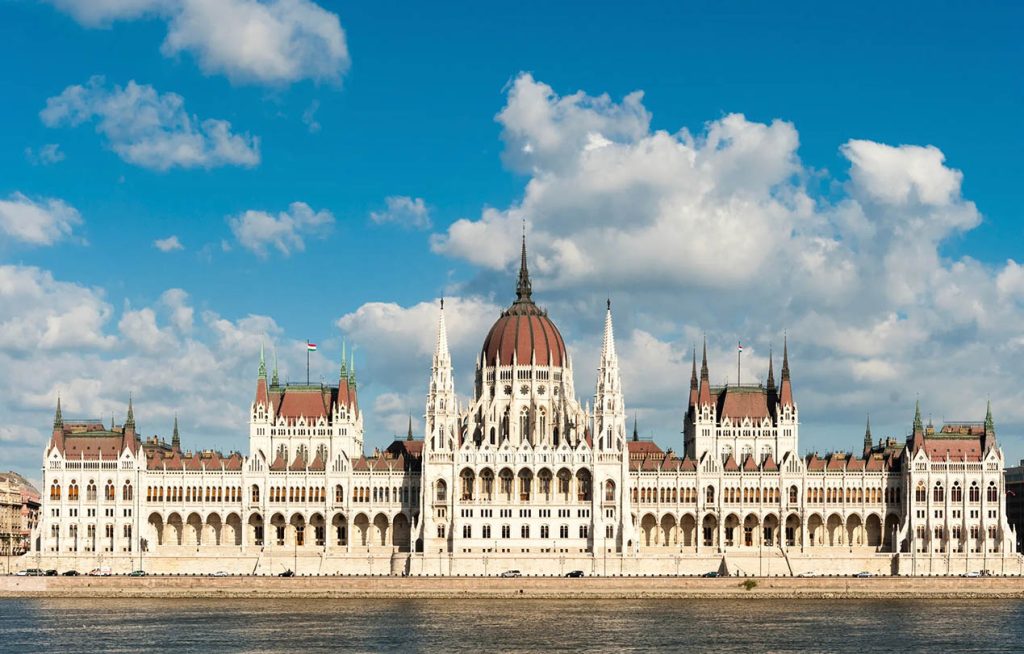
The Slovak Wine Route
Head a little further south of the country to discover the famous Slovak wine route. As this part of the country benefits from a temperate climate, it is suitable for wine production. The many local productions are the pride of the Slovaks. Although there are many memorable wines, do not miss tasting Frankovka Modrá, a red wine similar to Pinot Noir. Also, try another unique Slovak wine like Tokaj, a sweet white wine produced in the southeastern corner of the country, near the Hungarian border. Yes, wine tourism has a significant place in Slovakia.
Cheese
Slovaks are particularly proud of their high-quality cheeses. Do not miss tasting them during your trip. Goat cheese is extremely popular throughout the country and is used in many Slovak dishes. Among the most famous, bryndza is the most prized. This strong goat cheese is widely used in Slovak cuisine to accompany dumplings or to spread on freshly baked bread. This relationship between Slovaks and local cheese is so strong that many compatriots testify that bryndza cheese is the food they miss the most when they are away from their country.
How to Visit Slovakia?
The safest and fastest way to travel to Slovakia is by plane. You can take an international flight to Bratislava, Košice, or Tatras. It is also possible to travel by train from Paris, but it takes about 17 hours. Either way, the experience is unique and promises a gentle immersion in this fascinating landscape where mountains and medieval castles blend together.
Transportation in Slovakia
Bus
It is possible to visit Slovakia by bus. Since the roads are perfectly maintained, you will have no trouble touring the cities while traveling cheaply. The country has many bus companies to choose from. However, note that it is the most popular means of transport across the country, with more frequent connections during the week compared to weekends.
Tram and Trolleybus
These are the most used means of transport in the major Slovak cities. The local population often uses them to go to work or school, which is why they are very crowded in the morning and evening.
Trains
Trains serve different regions of Slovakia. This is why they are the most recommended for traveling through the heart of Slovakia. However, consider checking the official website of the Slovak railway company for fares throughout the country.
Taxi
Taxis are one of the most used means of transport in major cities like the capital. However, be careful of rigged meters when boarding. Agree on the fare with the driver before getting in to avoid any misunderstandings during your trip.
Climate and Weather in Slovakia
Slovakia mainly has a temperate continental climate with relatively cool winters and warm summers. The lower regions of Slovakia have a warmer continental climate with fairly mild winter months and slightly warmer summers. However, the higher parts of the Tatras have a high mountain climate with cool winters, also cool summers, and significant rainfall spread throughout the year.
When to Visit Slovakia?
Spring can be the best time to visit Slovakia because the days tend to be warm and the weather remains pleasant and mild for most of May. It is also the flower season to appreciate the wild nature of various Slovak regions.
Clothing to Bring
The choice of clothing for your trip to Slovakia depends on the time of year you have decided to visit the country. Dress accordingly. Also, prioritize hiking clothes and shoes. Bring warm clothes in case you plan to go to the mountains. In these regions, the temperature can drop quickly in the evening.
Good to Know
Language for Better Communication
As in most European countries, you can get by quite well in Slovakia without speaking the national language fluently. English is quite widespread thanks to international tourism and modern culture, especially among young people. German is also relatively practiced throughout the country due to the close ties between Slovakia and Austria.
Affordable Cost of Living
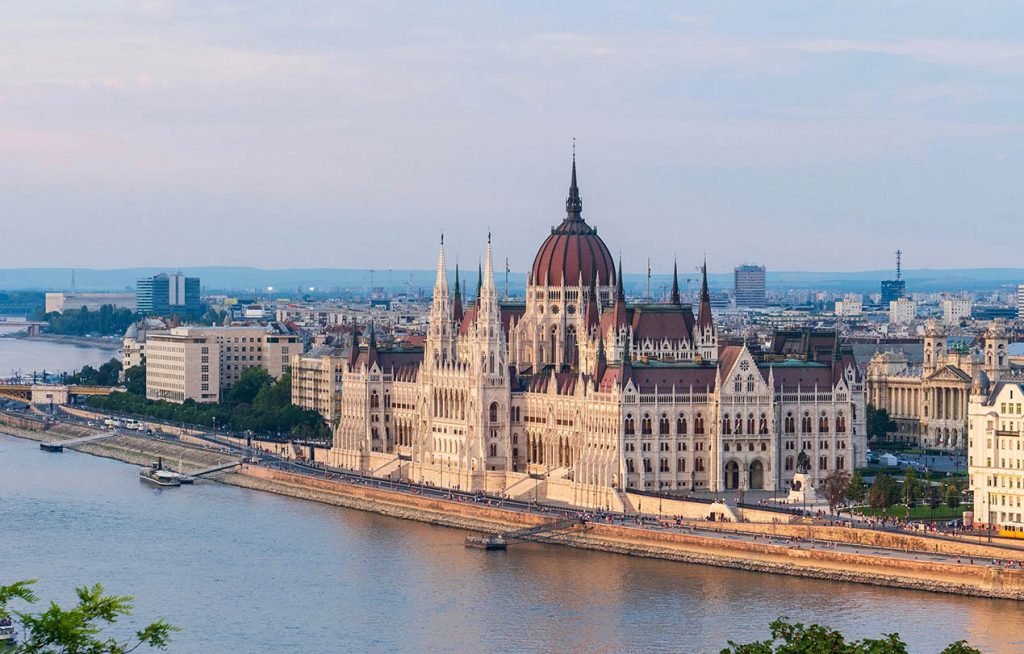
It is probably not surprising, but you will not break the bank when visiting Slovakia. Like the Czech Republic or Hungary, it is much more affordable than Western European destinations. Central Europe, except for Austria, is generally quite equal in terms of value for money.
Considerations for Transportation
Slovakia may seem small and easy to travel on a map, but appearances can be deceiving. The main thing that can escape people is that significant mountain ranges cross the country in its middle. These can indeed slow down travel in central Slovakia, whether by car, bus, or train.
Slovakia offers a perfect blend of natural beauty, cultural heritage, and outdoor activities that cater to every traveler’s taste. Whether you are exploring ancient castles, hiking in breathtaking landscapes, tasting local wines and cheeses, or immersing yourself in Slovak folklore, this country promises a memorable and enriching experience.
From the vibrant capital city of Bratislava to the serene natural beauty of the Tatras, Slovakia invites you to discover its unique charm and hospitality. Whether you’re a history buff, nature lover, or simply seeking a new adventure, Slovakia has something special for everyone. Plan your trip to this hidden gem in the heart of Europe and embark on a journey filled with discoveries, traditions, and warm encounters.
